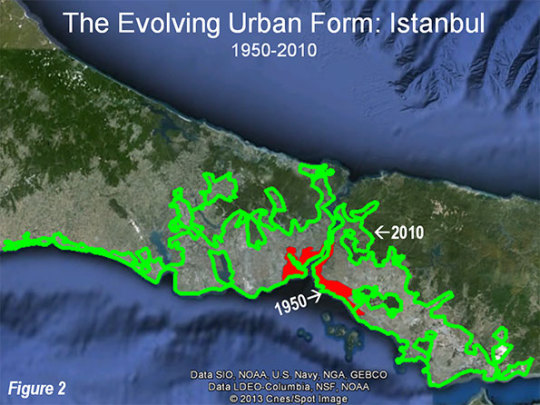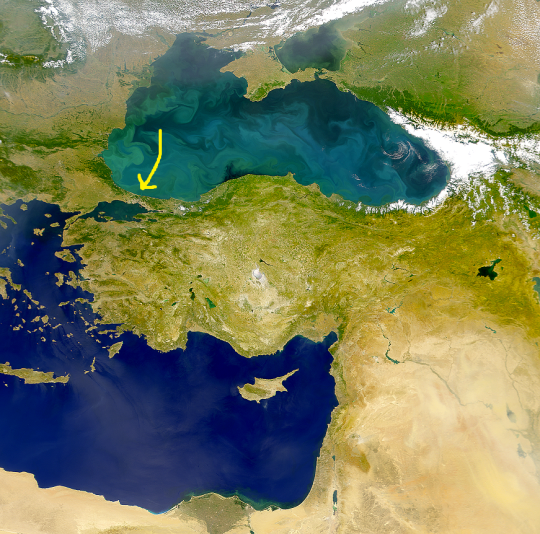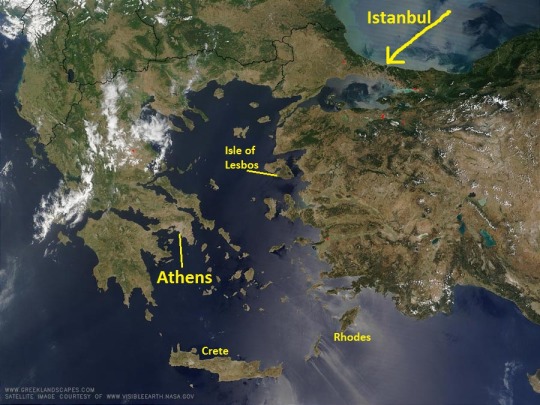
Growth of Istanbul: 1800, 1905, 2008
Located on the Bosporus Strait that separates Europe and Asia, metropolitan Istanbul has grown rapidly from about a million residents in 1950 to about 15 million today. The expansion has engulfed much of the surrounding region, threatening the agriculture, protective forests, and watershed on which the city-dwellers depend.
Here are some other visualizations of Istanbul’s rapid urban growth. I also have a couple of links to some Turkey-based urbanist and research project websites
that provide some good data on Istanbul’s urban geography, and good discussion of the challenges and consequences of Istanbul’s growth:
From a short article on Istanbul’s urban area, from New Geography:

From Reclaim Istanbul:

Just for reference:


–
For a firsthand account of Istanbul’s recent urban expansion, and its often negative consequences for communities, try visiting the blog Reclaim Istanbul: Urban transformations, spaces of hope.
From
the blog: “Reclaim Istanbul is an urban blog dedicated to urban
transformations of Istanbul. Reclaim Istanbul is founded in 2011 by
Yaşar Adnan Adanalı, Istanbul based urbanist, researcher and lecturer.”
The blog appears to have been inactive since 2016, but still provides some thoughtful posts, including:
Urban Ecological Crisis of Istanbul – A report by Sunday’s Zaman
An urbanist’s guide to Istanbul: ‘We live in a giant construction site’
–
Here is a link to the Istanbul Urban Database, an “ongoing digital humanities project, digitzing and visualizing the historic urban archives of Istanbul.” Here, you can play around with satellite and terrain maps, adding map layers like transportation corridors and zoning districts over historic and up-to-date maps of the city.
If this doesn’t excite you enough already, you can read what Citylab has to say about this project in their 2017 review of the site, “The Evolution of Istanbul, in Maps.”
–
The population of the contiguous urban agglomeration of Istanbul is
estimated at about 14.8 million people as of 2018, which ranks within
the top 25 most populous urban areas in the world, just above London,
Tehran, Johannesburg, and Rio de Janeiro.